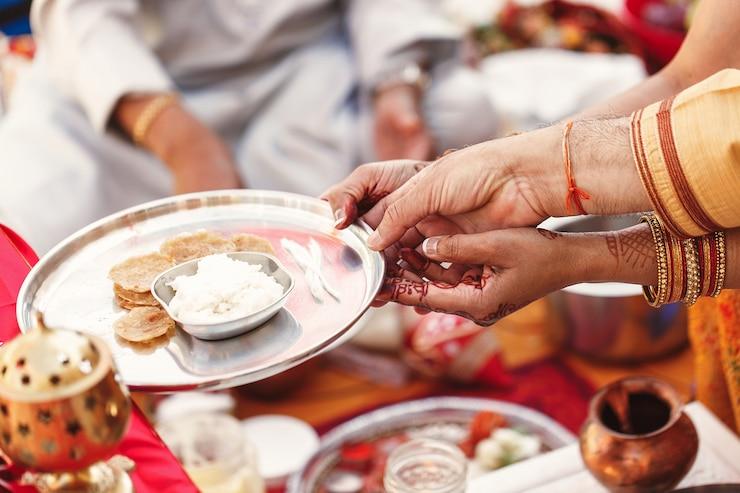Why Thrillophilia’s Kerala Honeymoon Packages Are Winning Over Travellers
- September 2, 2025
- lifestyle
Honeymoons are more than just vacations—they are the first chapter in a couple’s shared story. Choosing… Read More

Do you belong to a Hindu family, and are looking for a suitable partner for marriage? Making a Hindu marriage biodata can be your ticket to presenting yourself as a suitable bride or groom.
When crafting a marriage biodata, you may be wondering how to fill in the details to create an attractive and appropriate biodata. This blog will present a detailed guide on all the key elements of a Hindu biodata for marriage, and how they are structured.
A Hindu marriage biodata is a document that provides key information in detail for any individual looking to get married within the Hindu community.
For an individual belonging to the Hindu community, the document will provide a comprehensive overview of an individual’s background, professional life, and family, as well their preferences in a prospective partner.
It will essentially serve the following purposes:
Here, we look at the key elements of a Hindu marriage biodata format. This format can be broken down into six crucial segments. These segments can be represented as:
Pro tip: Choose a good marriage biodata app that allows you to customize your biodata according to your preferences.
Figure 1: Basic details in a Hindu marriage biodata
First, you need to start with the basic information about yourself.
In a Hindu marriage biodata, your religious background is important. This is because this biodata format is restricted to marriages within the Hindu community. However, what is more important to mention in most cases is your caste. Your sub-caste might also matter, so ensure that is added as well.
Other than that, your lineage details (gotra) and astrological details (rashi, nakshatra) will also be required, as these aspects are important to the Hindu marriage traditions.
Here is a comparison table describing how Nakshatra and Rashi are different:
| Aspects | Rashi | Nakshatra |
| Definition | 12 zodiac signs in Vedic astrology. | 27 or 28 constellations or lunar mansions. |
| Classification | Named after the 12 moon signs. | Named after specific stars or groups of stars in the lunar mansion. |
| Influence | Personality traits, behaviours, and life experiences. | Deeper aspects of personality, tendencies, and karmic influences. |
Table 1: Difference between Nakshatra and Rashi
This section focuses on the members of your closest family. This means, in a well-crafted marriage biodata, the information will focus essentially on your father, your mother, and your siblings, if any.
Here is a chart listing who to include and who not to include in the family details section of your marriage biodata:
| Must include | Need not include |
| FatherMotherBrotherSisterGrandfatherGrandmother | Distant cousinsDistant uncles and auntsGreat grandparentsAnyone not directly related to you |
Table 2: Family details in a Hindu marriage biodata
Educational qualifications are important aspects to be mentioned in the Hindu marriage biodata. In the Hindu community, being raised in similar educational curricula is considered a sign of compatibility.
Here, you need to mention your:
Like educational qualifications, the need to mention your professional achievements comes from the idea that two people with similar professional backgrounds will be more compatible.
Often, it is also worth noting that it is believed that a couple from similar professional backgrounds will also match in expectations, both from life and their partners. Thus, to manifest such a positive relationship, you would likely want to mention your:
Also, an optional element here is your annual salary, usually mentioned in Rupees and LPA (lakhs per annum). You will find that mentioned in a few Hindu marriage biodata PDF document examples. But, it is ultimately up to you whether you want to disclose this fact or not.
Your lifestyle and your personality are two of the most important factors that are scrutinised when going through your marriage biodata.
Here is a list of Dos and Don’ts for lifestyle and personality in a marriage biodata:
| Dos | Don’ts |
| Be honest.Be concise with the information.Mention creative hobbies.Only mention the languages you are fluent in. | Exaggerate.Lie about your hobbies or interests.Hide any indulgences like smoking or drinking.Falsely mention languages you do not know. |
Table 3: How to describe Personality traits in a Hindu marriage biodata
How to frame a well-crafted marriage biodata? There are a few tips that you can follow to ensure that you are following the Hindu marriage biodata format while keeping the information simple and concise:
While framing your Hindu marriage biodata, you need to avoid these common mistakes:
So, a Hindu marriage biodata requires important details about you to create a matrimonial profile. Your name, family details, personality, and lifestyle details all come together to frame an appropriate marriage biodata.
If you are looking for a marriage prospect in the Hindu community, sign up for a marriage biodata application today! Gather your important details, and craft a suitable Hindu marriage biodata.
Yes. We offer free services for creating a marriage biodata.
Yes. Our online templates are easily editable. You only have to sign in and edit the biodata.
All the elements are completely optional. If you are not looking for an intra-or-intercaste marriage in particular, you can choose to forgo the option.
No. An appropriate marriage biodata photo is better as a professionally clicked image.